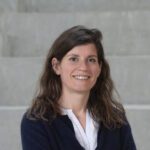Link to Pubmed [PMID] – 15818650
Arthritis Rheum. 2005 Apr;53(2):263-71
OBJECTIVE: To examine whether spondylarthropathy (SpA) disease manifestations would combine in any ordered pattern among patients from SpA multiplex families.
METHODS: SpA patients (n = 540) belonging to 190 multiplex families were thoroughly investigated. Clinical data was collected, systematic pelvic radiographs were taken, and HLA-B27 status was determined. The patterns of SpA manifestations were examined by several methods, including multiple correspondence analysis, nonhierarchical and hierarchical clustering, and discriminant analysis.
RESULTS: The nonhierarchical cluster analysis allowed us to classify patients, independent of disease duration, into 2 major groups of comparable size. Group A contained a majority of the women, whereas group B predominantly consisted of men. The 2 groups were very similar regarding axial symptoms, radiographic sacroiliitis, and uveitis. Group B was characterized by a younger age at onset and a higher frequency of clinical enthesitis, peripheral arthritis, dactylitis, psoriasis, and inflammatory bowel disease than group A. Patients belonging to those groups exhibited some degree of familial aggregation, thereby supporting their intrinsic validity.
CONCLUSION: Pattern analysis of SpA manifestations among familial SpA allowed us to recognize 2 main clusters independent of disease duration. Furthermore, there was a trend toward aggregation by cluster among families, suggesting that they are determined by specific genetic factors. These clusters may indeed correspond to different severity patterns.
